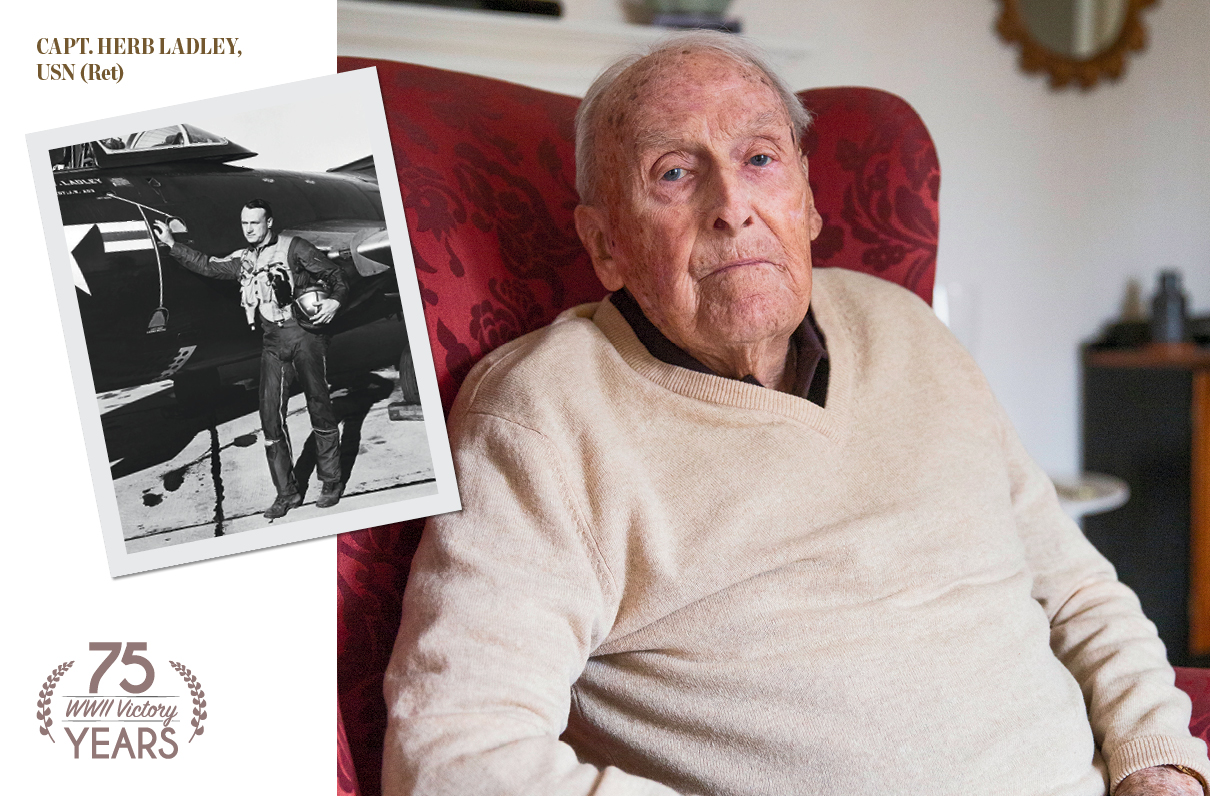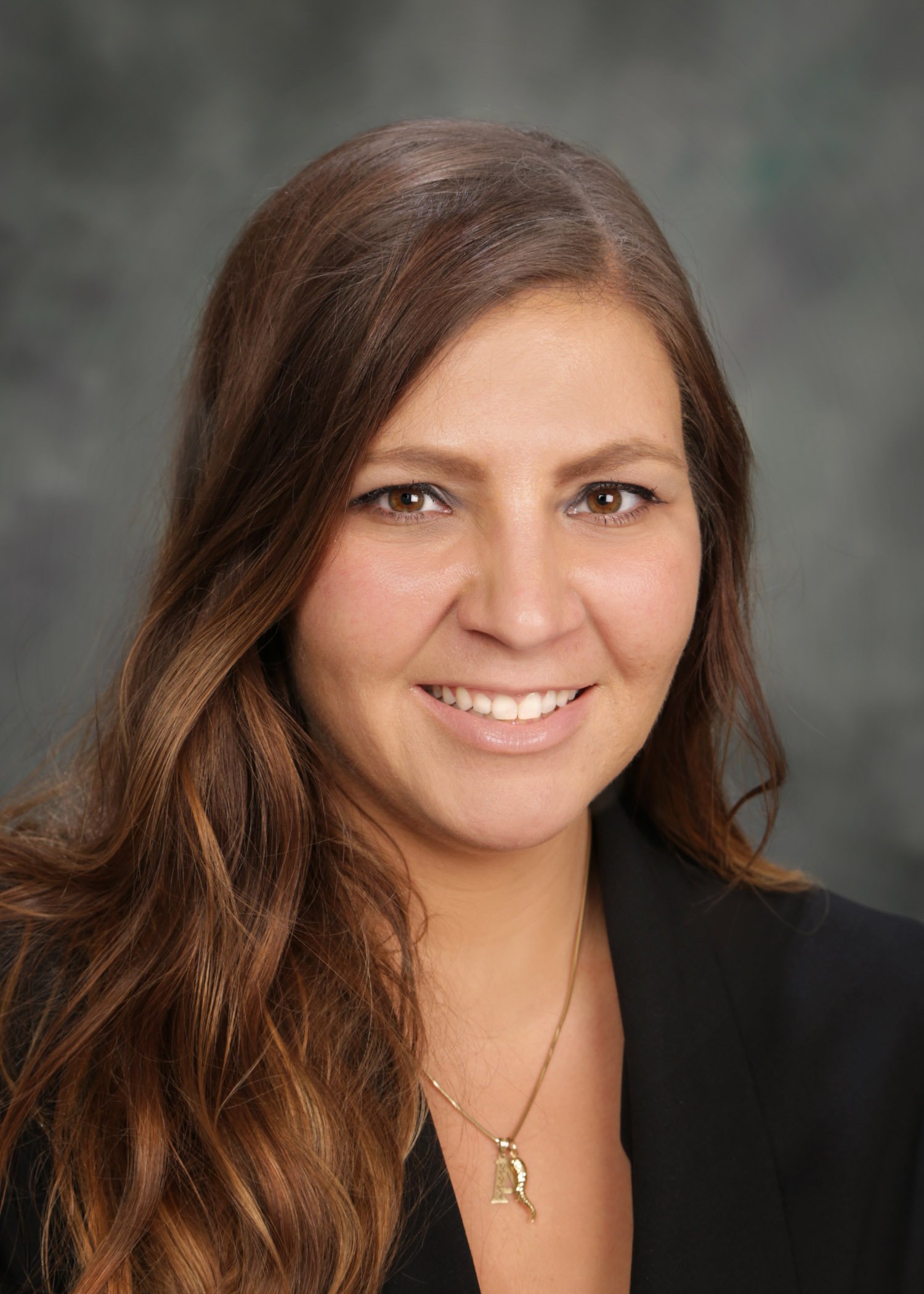(This article and others in MOAA’s “Window Into War” series originally appeared in the May edition of Military Officer, a magazine available to all MOAA Premium and Life members. Learn more about the magazine here; learn more about joining MOAA here.)
Ensign Herb Ladley was just 24 years old when he unleashed his first bomb from his F6F Hellcat in the skies over the central Pacific Ocean in 1943.
For the next year, Ladley and the aviators of the USS Langley air group hammered Iwo Jima, various atolls in the Pacific Ocean, and the Philippines. Ladley flew more than 100 combat missions to destroy targets with bombs and machine guns fitted to the Hellcat’s wings.
“I was just a fighter pilot on an aircraft carrier,” said Ladley, a retired Navy captain and veteran of WWII, Korea, and Vietnam. “There were hundreds of us out there doing the same thing.”
[RELATED: ‘A Survivor and a Liberator’: Col. Frank Cohn, USA (Ret), on His World War II Service]
Since Hellcats could effortlessly navigate different altitudes, the aircraft was effective against high-level bombers and low-level attacks by kamikaze planes. Ladley piloted his Hellcat from the deck of USS Langley (CVL-27) and USS Cabot (CVL-28) from December 1943 to October 1945.
Close Call
On his first combat mission, Ladley was in flying formation as a wingman, fixing his eyes on the flight leader.
“All of a sudden, up out of the ocean comes this ship with a lot of anti-aircraft fire, which we dove through and bombed and strafed,” he said.
One of the American pilots dropped a bomb too low and caught shrapnel. All of the other Hellcats immediately flew back to the aircraft carrier, Ladley said.
Later during the deployment, Ladley crash-landed his plane on the deck, careening into the ocean. He was picked up by a plane guard destroyer and was transferred to Langley by a high line.
[RELATED: From Teenage Pilot to POW: Col. Joseph Peterburs, USAF (Ret), on His World War II Service]
Langley returned to the continental U.S. in October 1944, when Ladley took advantage of the brief reprieve by picking up his fiancé Amy Reichert in Los Angeles and driving to Yuma, Ariz., to get married.
In May 1945, Ladley’s squadron was called back, deploying aboard USS Cabot from Hawaii to the Pacific Theater. Ladley flew air strikes over Wake Island, North Korea, and Manchuria.
Striking a Deal
As the war ended, Cabot was detoured to Okinawa on its return to the U.S. The ship was scheduled to stay there for months, but Ladley caught a break when a legal officer came looking for anyone with a bottle of whiskey.
Ladley remembered the bottle he bought when the ship sailed through the Panama Canal. He stored it in his locker for safekeeping and saw the opportunity to cash it in.
Ladley’s new friend gave the whiskey to a Navy coxswain in exchange for a ride on a motor whale boat to get to USS Amsterdam (CL-101), which was scheduled to sail directly to the U.S.
The men pulled up to the ship as it was preparing to get underway, so they hailed sailors on the cruiser deck. The Amsterdam crew lowered a line for luggage and a Jacob’s ladder for Ladley and his friend to climb.
Part of the whiskey deal was the coxswain was to depart immediately as the men hit the deck, making it impossible to send the hitchhikers back. The men bluff ed their way into staying by telling the ship’s executive officer they had verbal orders to Amsterdam.
The officer quarters were filled, so they slept on cots in the ship’s passageway for a few days until they could be moved to the junior officer state rooms. Ladley befriended the ship’s commanding officer, occasionally dining with him and swapping war stories.
While stopped in Honolulu, Ladley called his wife to tell her he would be coming home sooner than expected, aboard Amsterdam.
MOAA Knows Why You Serve
We understand the needs and concerns of military families – and we’re here to help you meet life’s challenges along the way. Join MOAA now and get the support you need.

